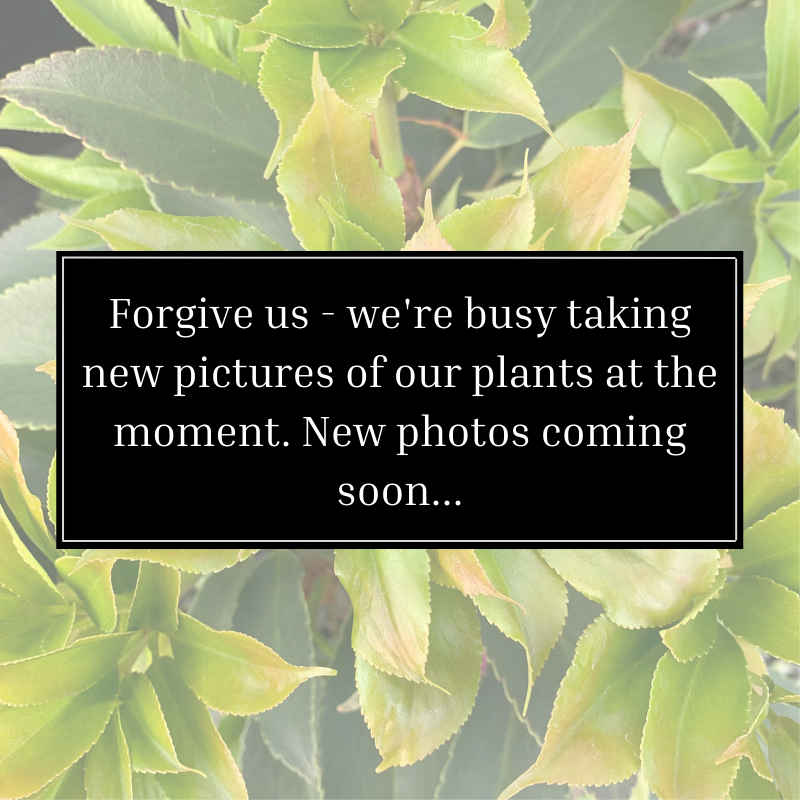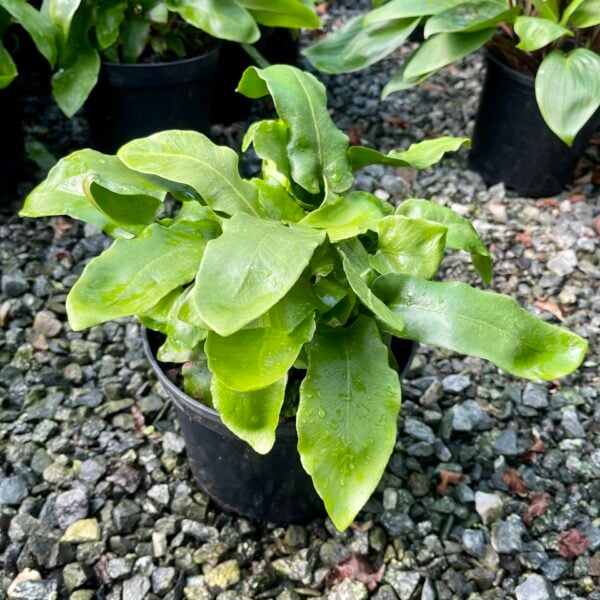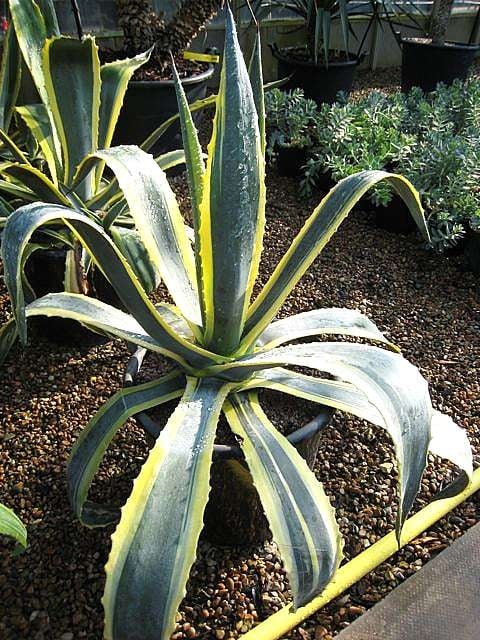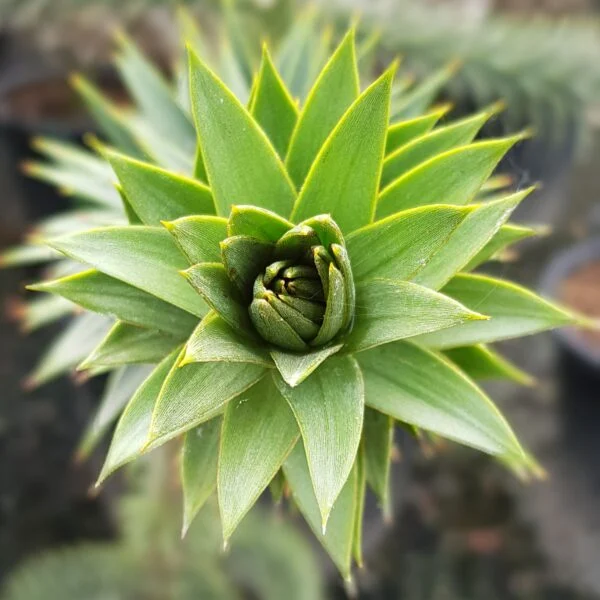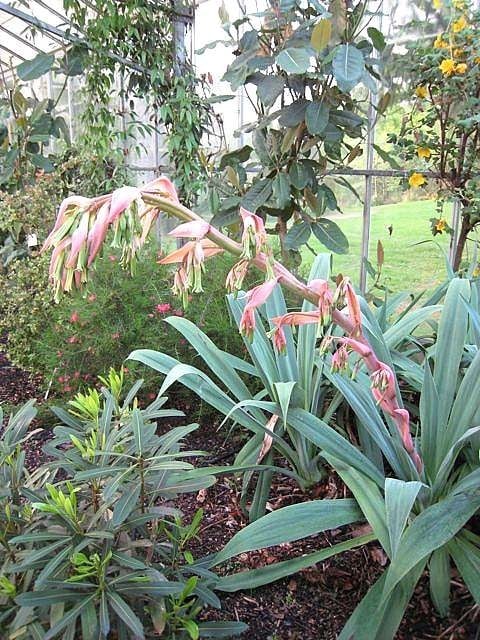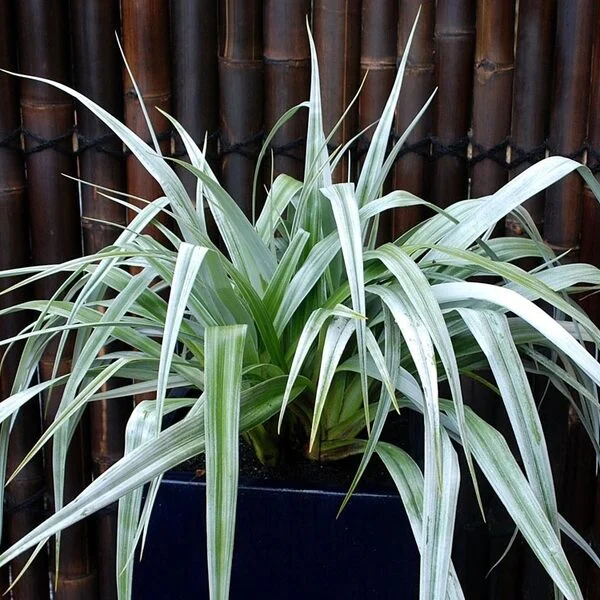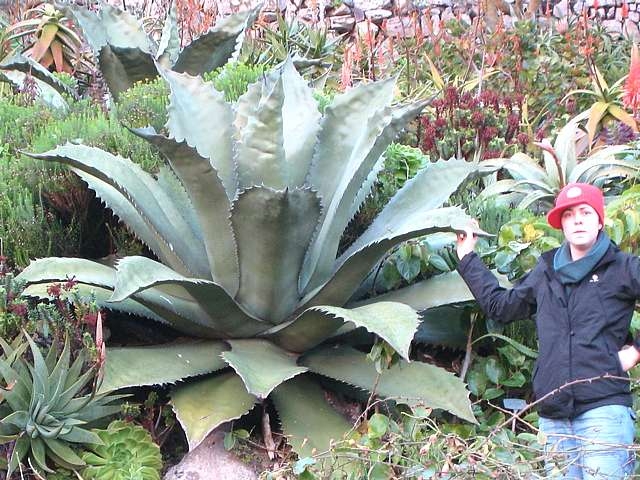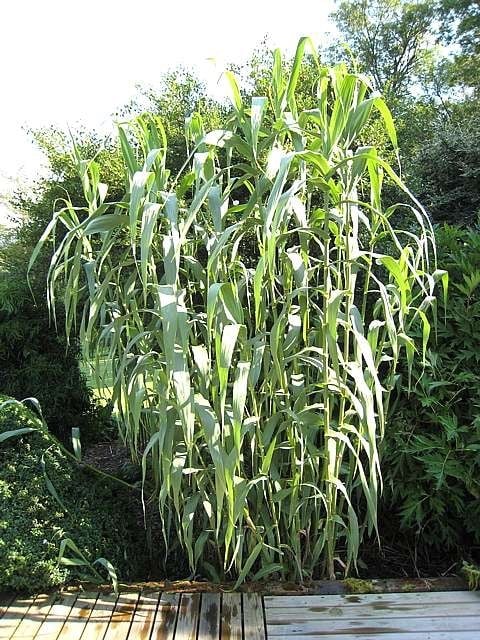Schefflera rhododendrifolia (Hardy Umbrella Tree)
Also called Schefflera impressa, this is an evergreen shrub-to-small-tree. Initially it develops a tall straight trunk before beginning to branch, could reach 3m. The leaves are arranged in a whorl of 6-10 leaflets with red stalks and stems up to 30cms in length. In late summer to early autumn blobs of creamy white flowers appear that then develop into black fruits. Contact us for plant availability and sizes.

Hardiness level Amber
Look up into the canopy of one of these (from standing if it’s a big ‘un. Lie down with your boots poking out and alarm your family if it’s a small one) and you’ll have a view of the sky that you’d be forgiven for being some tropical, Jurassic lost place. Palmate leaflets radiate from a slender central stalk in layered clusters that look like flocks of parasols swept up in a gust. Appearing quite delicate, but don’t be deceived, for they are leathery and evergreen and awfully tough. The leaves are glossy and have a distinct fold along each central vein: a crisp valley that runnels shed water. When it rains you’ll see quite how umbrella-like they are.
This one grows steadily into an open-canopied and very striking tree, but will take some time to do so. A seedling of this tree, collected in Nepal (screaming clue re hardiness) was planted in Argyll in 1965 by Sir Peter Hutchinson, and it thrives to this day. It’s ten metres tall.
Pretty damned cold-hardy, this tree is a slender piece of proper exotica for a sheltered garden here in the UK. Yes, Nepal is chilly-willy and these plants are robust but reports are that Sir Hutchinson’s seeds were collected from areas of protected woodland and from against warm (ish) cliff faces. Site accordingly.
There are some lush examples at Tregrehan gardens in Cornwall that are doing splendidly both up against the house and in the shrubbery. If you’re going for a rangy and primaeval woodland feel and want some inspiration, the kind of forest around an enchanted castle for example, then this is the location to see them. It’s a proper echo of their natural habitat, surrounded by rhododendrons and other shaggy, glossy creatures of that ilk.
We are really proud to have these available, for they really are very rare and special. Given all that, they are happy in soil that’s moist and well-drained and rich with organic matter. Think forest floor. Slimy cold clay isn’t appealing for anyone, and if you’re digging holes in plasticine then you have our sympathies and we’d say go for a chunky pot for this tree ,just to be on the safe side.
N.B. When clipping several plants with the same tool, have a bucket containing a 5% bleach solution and swish your blades around for 30 seconds between plants to sterilise them. This will help avoid the chance of cross contamination of disease.
As with all woody plants, plant high, exposing as much of the taper at the base of the trunk as possible. Allowing soil to accumulate round the base of a tree can be fatal. Keep very well watered when first planted.
Additional Information |
|
|---|---|
| Continent of Origin | |
| Hardiness | |
| Features | |
| Plant Type | |
| Tree Size | |
| Specialist Plants | |
| Light | |
| Flower Colour | |
| Situation | |
| Soil Type | |





